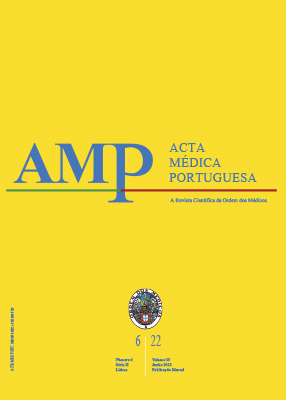The Role of High Flow Nasal Oxygen in the Management of Severe COVID-19: A Systematic Review
DOI:
https://doi.org/10.20344/amp.16686Keywords:
Cannula, COVID-19, Critical Care, Noninvasive Ventilation, Oxygen/therapeutic use, Respiration, Artificial, Respiratory Distress, SyndromeAbstract
Introduction: Oxygen therapy remains the cornerstone for managing patients with severe SARS-CoV-2 infection and several modalities of non-invasive ventilation are used worldwide. High-flow oxygen via nasal canula is one therapeutic option which may in certain cases prevent the need of mechanical ventilation. The aim of this review is to summarize the current evidence on the use of high-flow nasal oxygen in patients with severe SARS-CoV-2 infection.
Material and Methods: We conducted a systematic literature search of the databases PubMed and Cochrane Library until April 2021 using the following search terms: “high flow oxygen and COVID-19” and “high flow nasal and COVID-19’’.
Results: Twenty-three articles were included in this review, in four of which prone positioning was used as an adjunctive measure. Most of the articles were cohort studies or case series. High-flow nasal oxygen therapy was associated with a reduced need for invasive ventilation compared to conventional oxygen therapy and led to an improvement in secondary clinical outcomes such as length of stay. The efficacy of high-flow nasal oxygen therapy was comparable to that of other non-invasive ventilation options, but its tolerability is likely higher. Failure of this modality was associated with increased mortality.
Conclusion: High flow nasal oxygen is an established option for respiratory support in COVID-19 patients. Further investigation is required to quantify its efficacy and utility in preventing the requirement of invasive ventilation.
Downloads
Downloads
Published
How to Cite
Issue
Section
License
Copyright (c) 2022 Acta Médica Portuguesa

This work is licensed under a Creative Commons Attribution-NonCommercial 4.0 International License.
All the articles published in the AMP are open access and comply with the requirements of funding agencies or academic institutions. The AMP is governed by the terms of the Creative Commons ‘Attribution – Non-Commercial Use - (CC-BY-NC)’ license, regarding the use by third parties.
It is the author’s responsibility to obtain approval for the reproduction of figures, tables, etc. from other publications.
Upon acceptance of an article for publication, the authors will be asked to complete the ICMJE “Copyright Liability and Copyright Sharing Statement “(http://www.actamedicaportuguesa.com/info/AMP-NormasPublicacao.pdf) and the “Declaration of Potential Conflicts of Interest” (http:// www.icmje.org/conflicts-of-interest). An e-mail will be sent to the corresponding author to acknowledge receipt of the manuscript.
After publication, the authors are authorised to make their articles available in repositories of their institutions of origin, as long as they always mention where they were published and according to the Creative Commons license.









